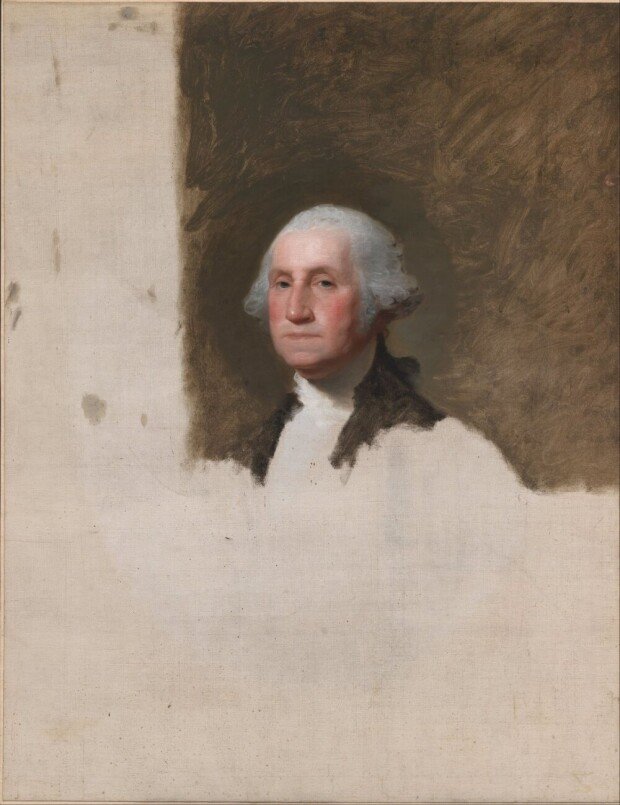The art of the unfinished: Gilbert Stuart’s athenaeum portrait
The art of the unfinished: Gilbert Stuart’s athenaeum portrait
Posted February. 15, 2024 07:42,
Updated February. 15, 2024 07:42

Gilbert Stuart was the greatest American portrait artist of the 19th century. He painted approximately 1,000 portraits, including those of six of the first Presidents of the United States. However, the most famous among his works is the unfinished portrait, ' Atheneum' (1796). How could an incomplete painting become his representative work?
The figure captured in the portrait is undoubtedly familiar to us: George Washington, the first president of the United States. Portraying a sitting president is no small feat, and what makes it even more remarkable is that the portrait remains unfinished. Gilbert Stuart, originally from the United States but known for his work in England, returned to his homeland in 1793 at 38, driven by aspirations of tremendous success. Stuart's objective was crystal clear: he aimed to create a portrait of the highly respected and supported President Washington, produce prints of it, and generate substantial income through their sale. The saying, "If you really want it, it will come true," seems to have held true for Stuart.
After successfully painting a portrait of politician John Jay in 1794, he finally secured the opportunity to depict the President the following year, courtesy of John Jay's introduction. In the resulting artwork, Washington is depicted three years before his passing at the age of 64. In his eighth year in office, the president is not portrayed as a war hero or a man of power. Instead, he exudes the air of a dignified old gentleman with gray hair. Stuart intentionally left the painting incomplete, focusing solely on Washington's face and neck. This decision did not hinder its popularity; Stuart created several reproductions to meet the high demand for these replicas. Following Washington's death, Stuart produced 130 reproduction paintings, each fetching a price of $100. The artist also produced prints of the portrait, contributing to its widespread circulation. The image even reached postage stamps and the U.S. one-dollar bill. As a result, this portrait evolved into a representative image of Washington, resonating with Americans and people around the world.
Stuart retained the unfinished original, a source of wealth and fame, until his passing. The title "Athenaeum" was posthumously bestowed upon his paintings when they found a new home at the Boston Athenaeum Museum of Art. Having surpassed his initial goals, Stuart found no necessity to complete the famous portrait of Washington. This deliberate choice is why the iconic representation of Washington remained perpetually unfinished.
Headline News
- Biden authorizes Ukraine to use long-range missiles against N. Korea's troop deployment
- Democratic Party criticizes court in charge of Lee’s case for ‘judicial murder’
- Jannik Sinner achieves remarkable success on tennis court
- Xi Jinping asks Yoon to visit China first
- Chey Tae-won appointed as chair of APEC CEO Summit







